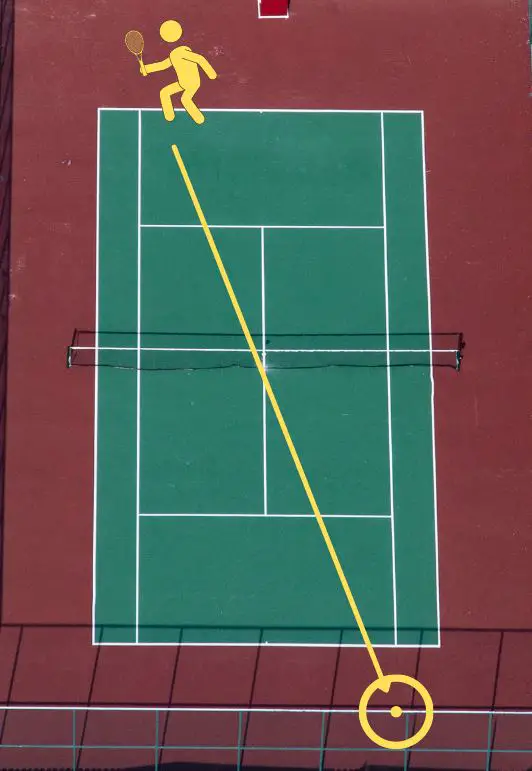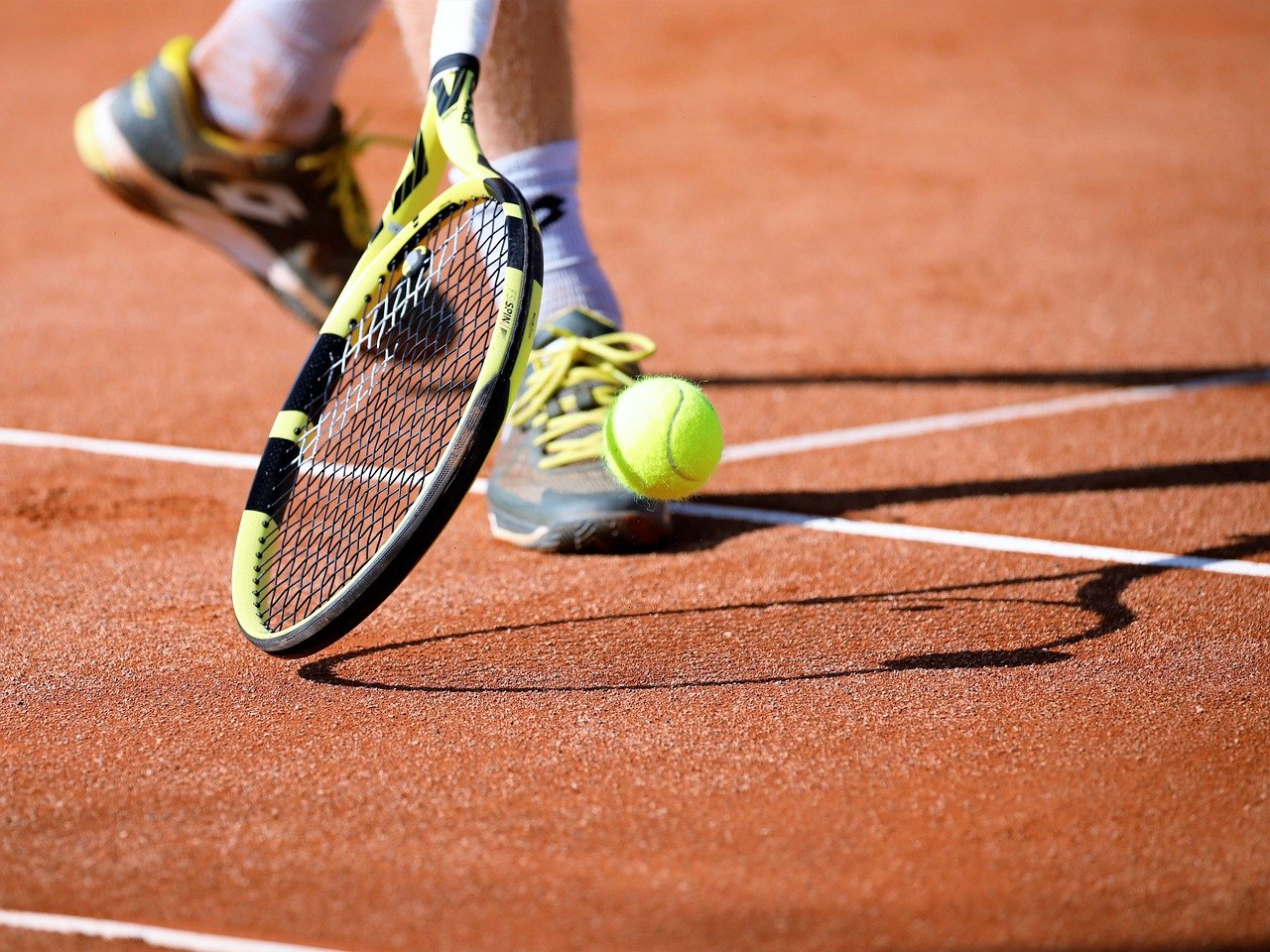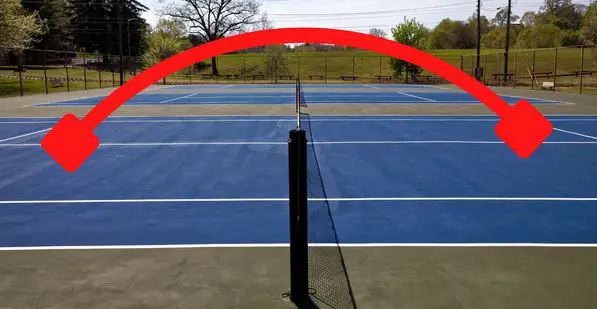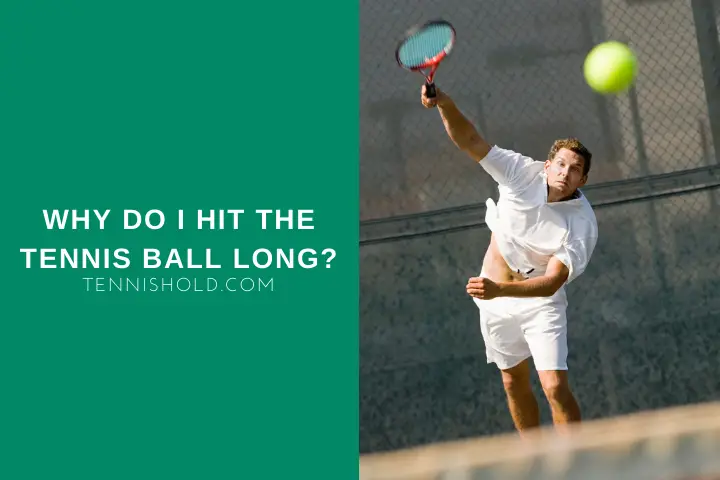Having a string of unforced errors is pretty annoying in tennis that most of us can agree on.
What makes it even more frustrating is when you continue to make the same mistake over and over again.
Sometimes you won’t even know why you’re making the error. For example, one of the most common and frustrating mistakes in tennis is hitting the ball long.
The most likely reason that you hit the ball long in tennis is due to the angle of your strings as your racket makes contact. If your strings are pointing up too much, the odds of the ball going higher and deeper increase. Strings point up, the ball goes up.
These errors are pretty easy to correct, but it takes a bit of self-evaluation. You will often need to see where the ball landed and mentally rewind the point to see where you went wrong.
In this article I will be answering the following questions:
- Why are the forehands I hit going long?
- What can I do to stop hitting the ball out?
- Is control more important than power?
I can’t guarantee that you will never hit the ball out again after reading this article. I promise, though, that I will give you some useful tools to help you better evaluate and self-correct your errors.
Why Are My Forehands Going Long?

One of the first things I learned when training to be a tennis coach was PAS. PAS stands for Pathway, Angle, and Speed.
These three words represent the factors that influence where you hit the ball.
These three words, used together, are one of the most important tools you can use for finding and correcting errors. This is especially true if the error involves hitting the ball too long.
In its simplest form, the pathway is how you move the racket before and after you hit the ball. Both the backswing and the follow-through form the pathway.
If you watch tennis on TV, you will see that many pros have a different swing path as they go to hit the ball. This, therefore, means that there isn’t one correct pathway.
The angle refers to where the strings are pointing as your racket touches the ball. You can think of the angle at contact as the strings talking to the ball.
If the strings are pointing up, then the racket is telling the ball to go up.
Speed means how fast the racket moves during the swing. But, most importantly, how fast the racket is moving as it makes contact with the ball.
If you are consistently hitting the ball long on your forehand, you can use these factors to work out what has gone wrong. The best way to analyze an error like this is to look at where the ball landed and then work your way back.
The example I am about to give is a little oversimplified. To perfectly evaluate the shot, you would also need to consider what has happened earlier on in the point.
Have a look at the image below. I’ve drawn a player, a line, and a circle with a dot in the picture. The circle and dot show where the ball you have hit landed.
The line represents where it traveled to get there. The player shows where you stood as you hit the shot.

If you had been rallying cross-court with someone and your goal was to keep them pinned in the corner, you did the right thing. At least in terms of direction.
Some of the following questions will help you in determining why you hit the ball long:
- Where were my strings facing as I contacted the ball?
- What direction did my racket go after I hit the ball?
- How fast was I swinging?
- Did I feel in control as I hit?
If your strings were facing up as you made contact, that would explain why the ball drifted high and out. In tennis, height usually equals depth.
If you pulled the racket straight up at contact before following through, that could also have caused the ball to drift too far and out.
Perhaps you felt that you didn’t have control as you hit. Often, lack of control comes from swinging too fast.
Once you have identified why you are hitting the ball out, you can begin to work on solutions to fix it.
How To Stop Hitting The Ball Out?

As mentioned before, the most common error comes from the angle of the strings at contact. This has an easy fix. If the strings are facing up too much, point them down a bit more.
The greatest risk now is overcorrecting. If you tilt the strings too far down, the ball will go in the net. So again, I would recommend getting a session with a coach or someone willing to feed you many balls.
While hitting the balls, adjust the racket angle in between each shot to find the perfect contact point. Once you have it, keep hitting the balls until it has become a habit.
Of course, adjusting your racket is not the only option you have to increase the chance of the ball going in.
Using topspin is another way you can increase consistency. Topspin is when the ball spins forward in the air. As the ball hits the ground, it will bounce up higher due to the spin.
When you hit with topspin, the ball will travel in more of an arc motion.
An arc motion is when the ball goes up before dipping down. The red curve in the image below illustrates the arc motion the ball can travel when being hit with a topspin.

Another thing you can do to increase the chances of getting the ball in play is to adjust your positioning. To get the perfect contact point, you need to be standing a reasonable distance from the ball.
Even if you know what the perfect contact point looks like, you will not be able to get it if you are too far or close to the ball.
The final tip I have is to change the tension on your strings. If you string your racket at a higher tension, it reduces the trampoline effect. This will reduce power but at the same time increases control.
Control Is More Important Than Power
When you watch pros play, it looks like they have a high level of power while also maintaining control. This is true, but sadly for most of us, we have to choose between power and control.
A general rule is that you should only hit as hard as you can comfortably control. It may feel very nice hitting a blinding winner at speed, but how many times out of 10 will you make that shot?
Control is more important than power. Power comes from your ability to control the ball.
Not the other way round. You will only be able to hit with power when you can control the ball.
Kei Nishikori once served an ace at less than 90 mph. This is proof enough that power is not always needed to win the point.
Tennis is simply a game of who can put the ball in the court more. Therefore, every point is worth the same no matter how it is won.
Final Words
There are many reasons why you could be hitting the ball too far. But using the tips I have shared with you today will certainly help find the error and then correct it.
After reading this, have you begun to notice a pattern in your errors? Perhaps you already had an idea of what was causing your mistake, and this has confirmed it.
I’m keen to hear your thoughts.

